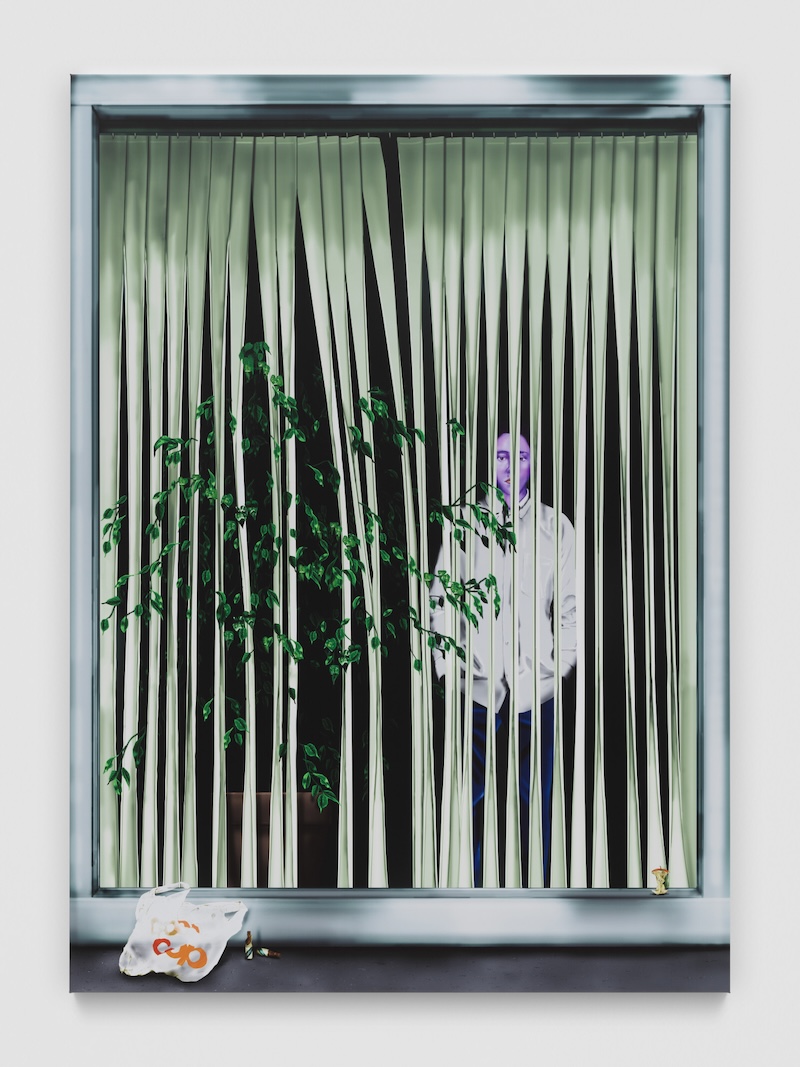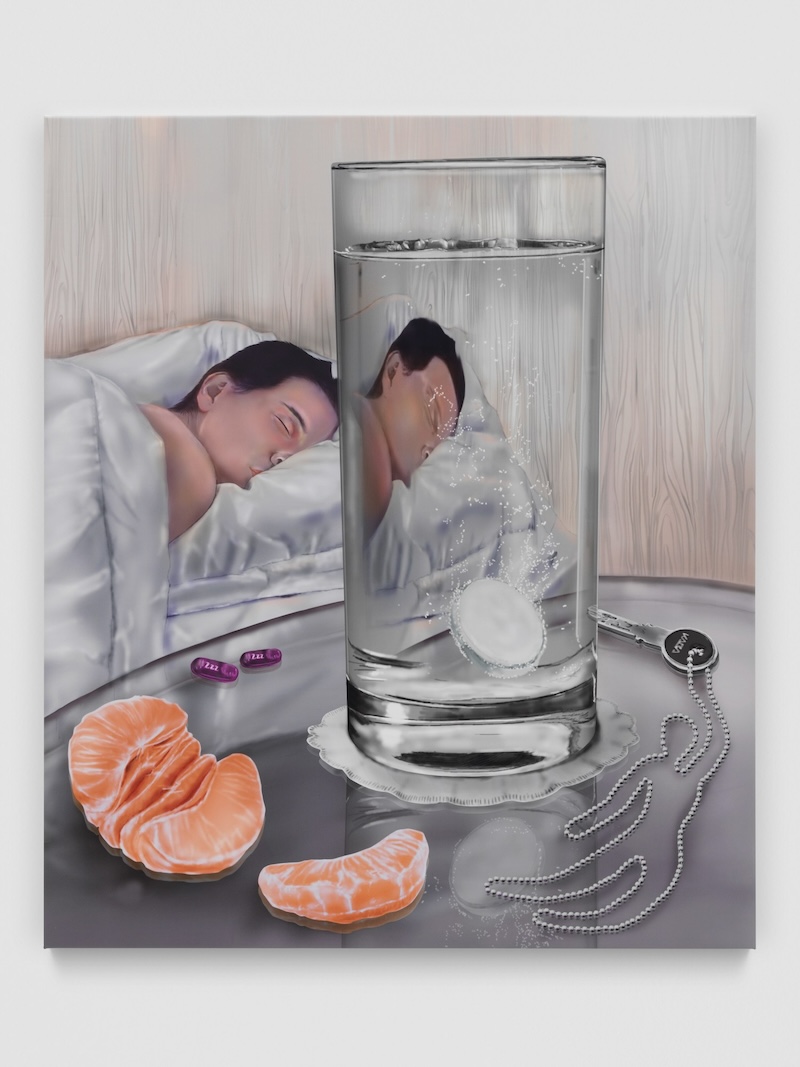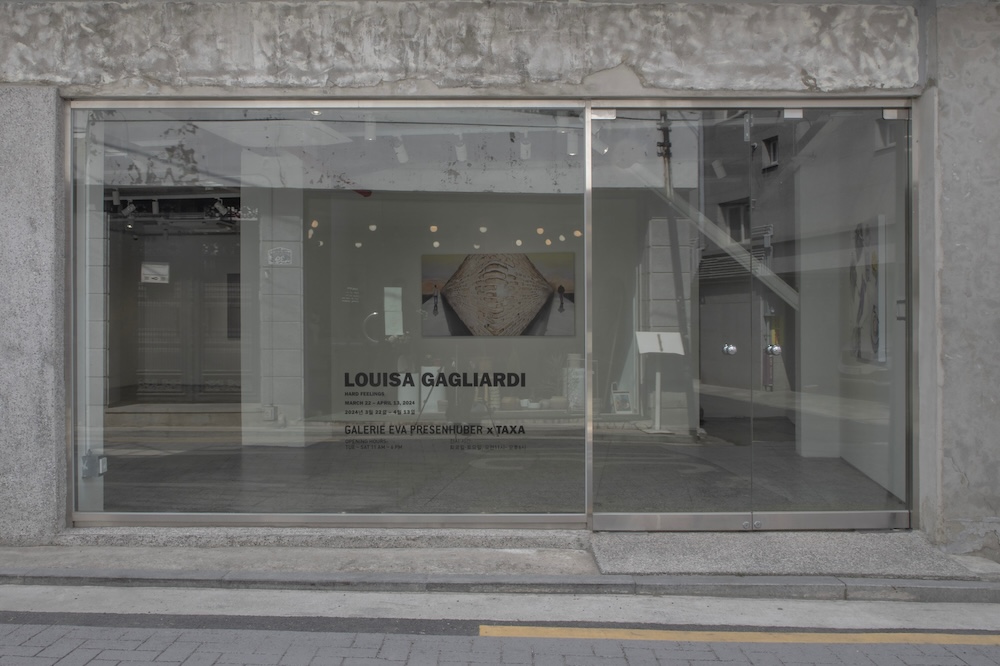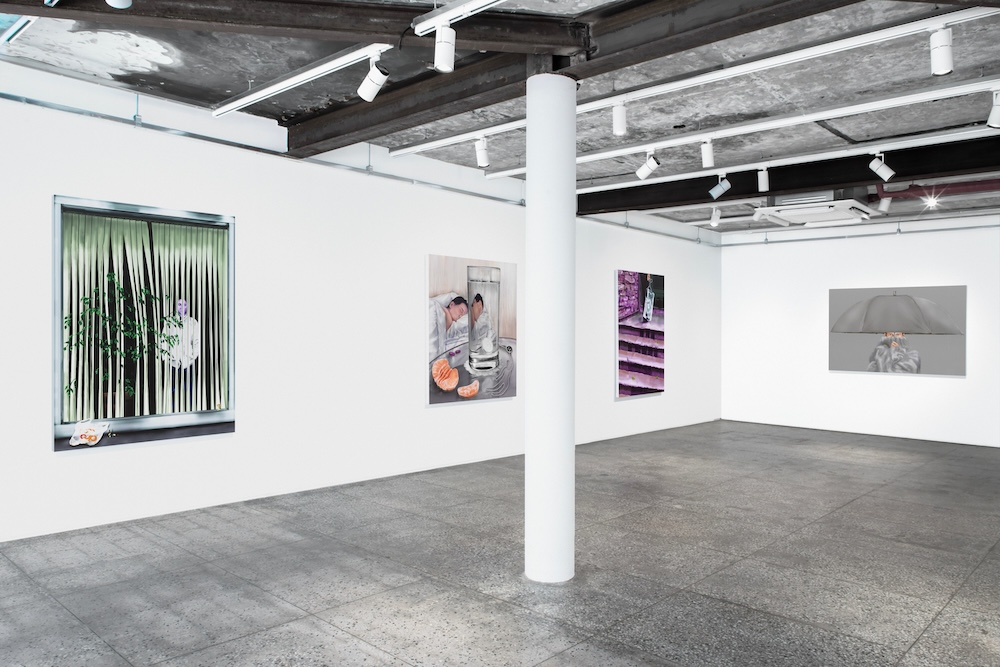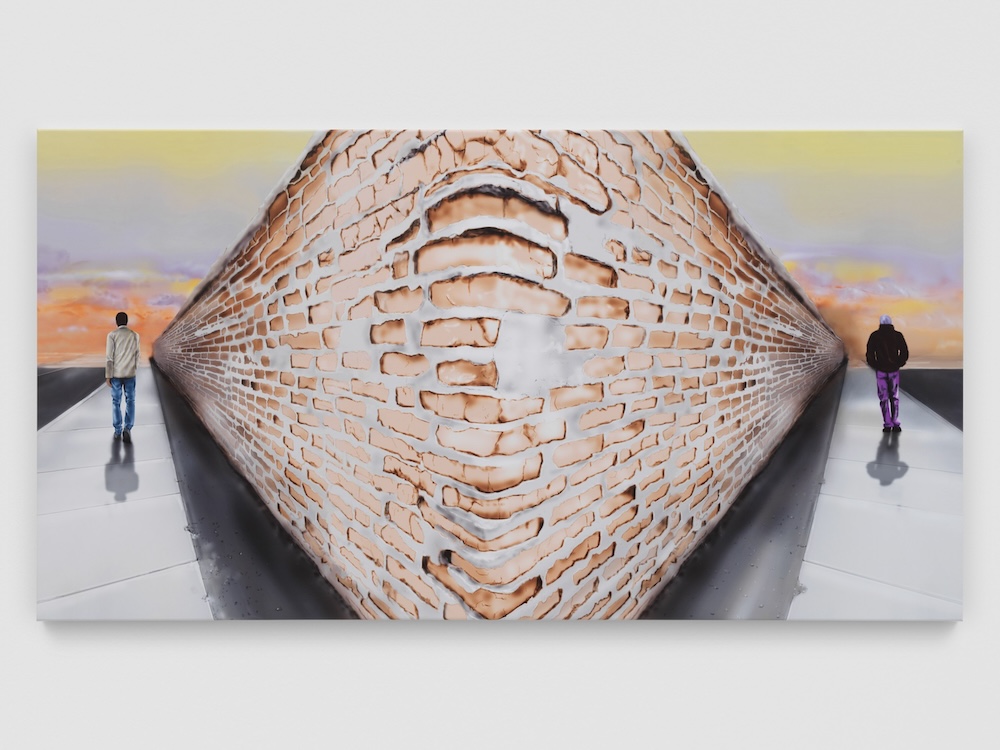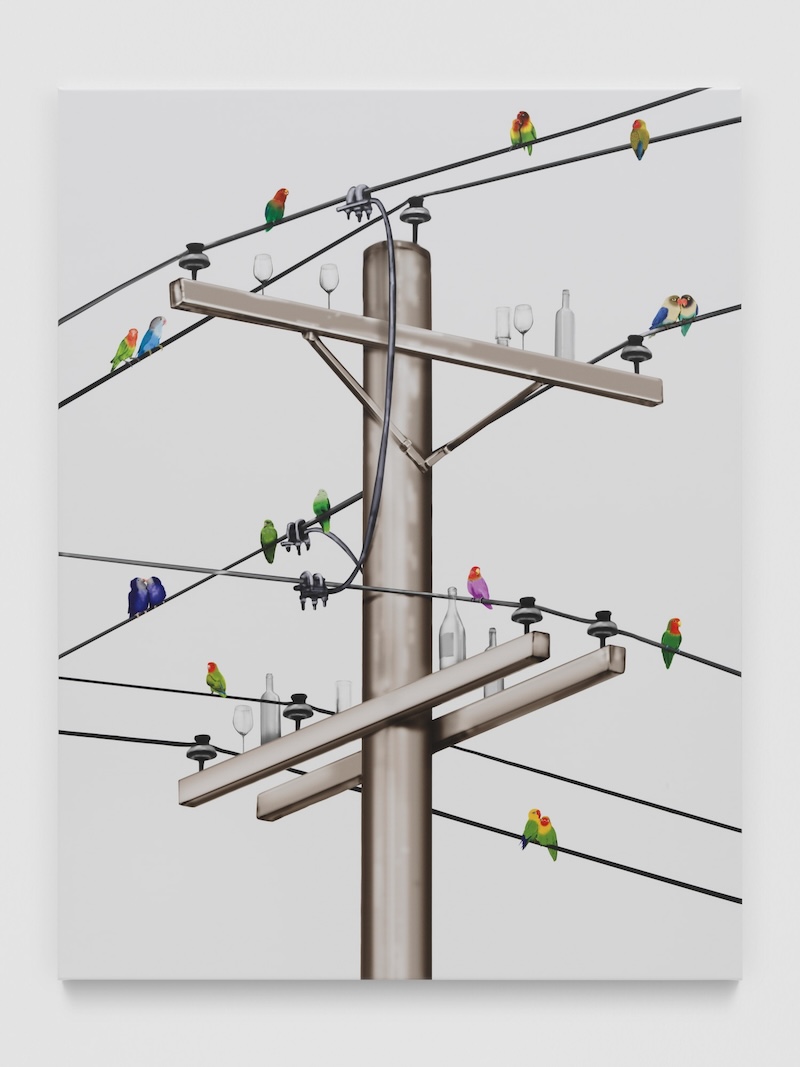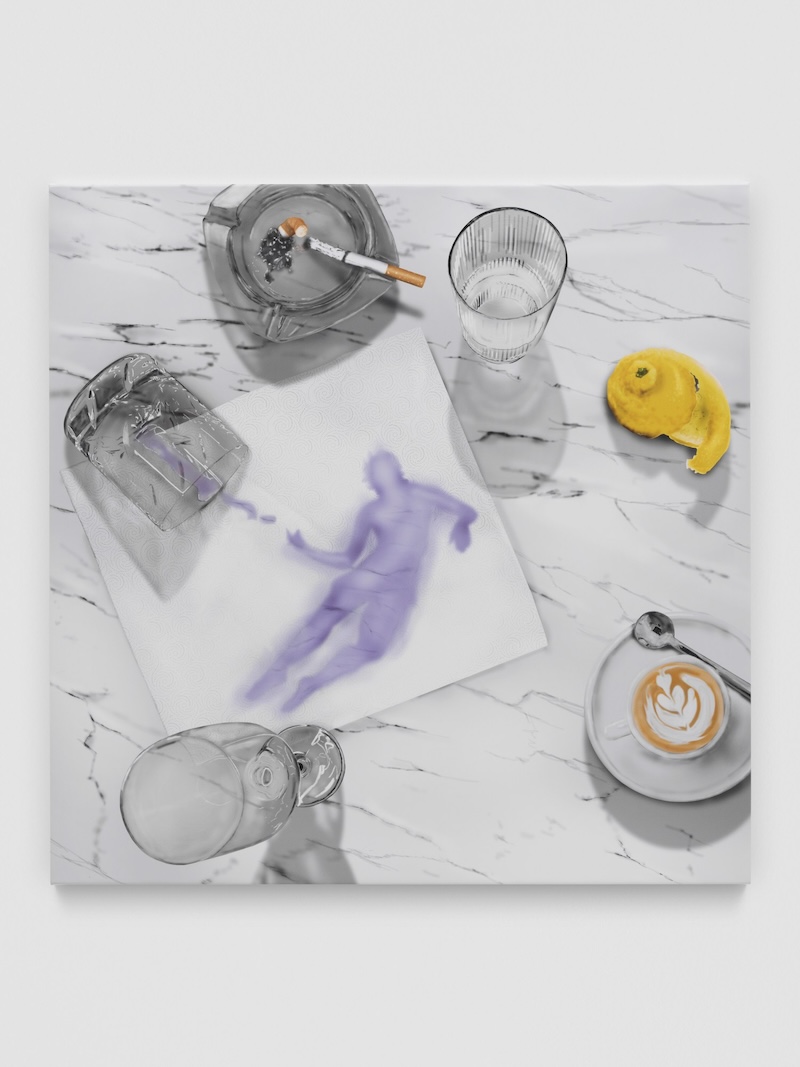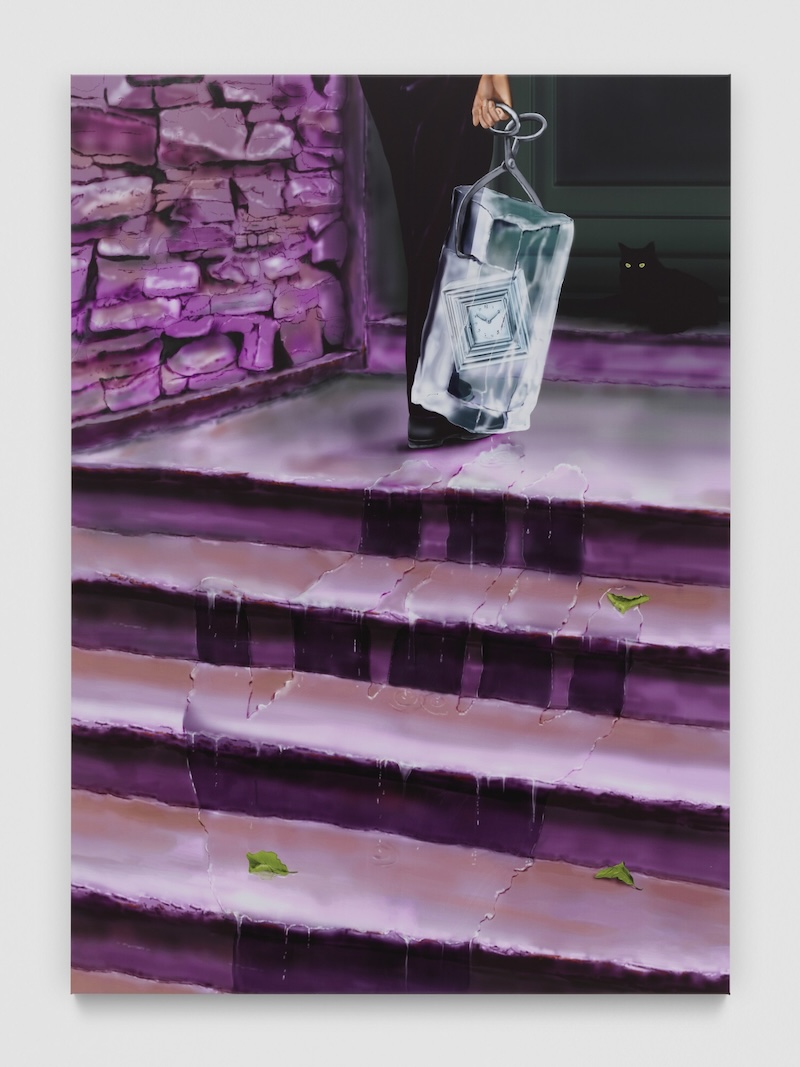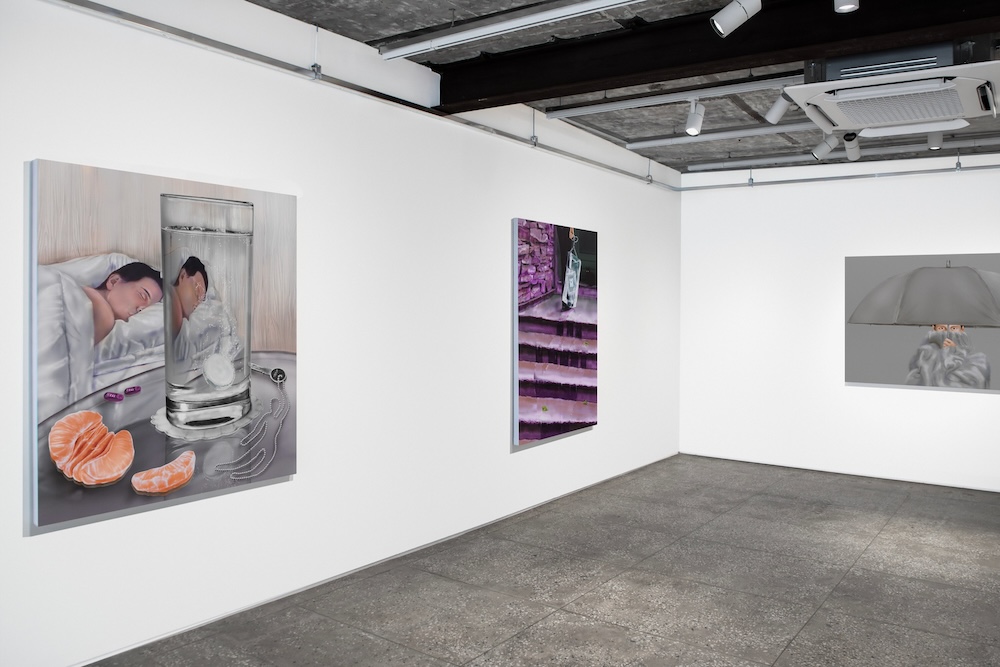Galerie Eva Presenhuber is pleased to present Hard Feelings by the Swiss artist Louisa Gagliardi at Taxa, Seoul. Featuring a suite of new paintings, it is the artist’s second solo exhibition with the gallery and her first exhibition in South Korea. The artist will be present at the opening.
Although the work of Gagliardi has been mostly referred to as paintings – and indeed the artist produces them – it is accomplished through deftly surprising methods that stretch beyond the medium’s historically defined confines. In many ways characteristically pronouncing painting, the works paradoxically belie an unorthodox approach on their surface – evermore rarefied when considering the ubiquity of approaches to the genre which have come in abundance, particularly in recent years. While one might deduce expanded painting here – think Vivian Suter, Sam Gilliam, or Lynda Benglis – her background in graphic design is a vehicle through which her work turns corners, rather than a concern toward the sculptural per se.
Working digitally initially – using a freehand, digital illustration tool – Gagliardi’s pieces are later translated into the format, scale and other forms of performance that appear as undeniably associated with painting. Pigment and brushstrokes may well arise, though her works are primarily digitally printed. They replace paint for printing ink, canvas for PVC and traditional lacquer for a gel material – mediums that are perhaps more at home with the advertising industry than with the weighty history of painting.
Gagliardi’s use of industrial methods might suggest an affiliation with Pop and its direct aftermath, yet her pieces ensnare questions of image making to suggest issues not only bound to process, but also, and perhaps more importantly, the surreal and the liminal. They imbue a reverberating desolation where both the familiarity and dislocation of subjects are depicted in a ghostly presence, alighting, it seems, between diverging timelines.
Paintings often contain figures that appear caught in a state between human and machine, mirroring the confused tone of the contexts we find them populating. Springing to mind here might be the propagating and dissemination of personas and identities, as propelled relentlessly via our seemingly unchained relationship with social media. Similarly, we might consider our relationships to environments, again as filtered through, and melded by our screen-based engagements.
Slippages occur between figures and architecture and between presence and absence, and this apparent incongruity is reflected in the behaviour of subjects who appear to function roles but be entirely disengaged from them. Figures and subjects appear lost and passive, and they both emerge in and submerge into scenes of unresolve, illustrating the consequence, perhaps, of the dual perplexity of our own existence – online and offline. The constant drifting of characters, buildings, and objects in Gagliardi’s works indeed reflect our very own ambivalence toward experiences, informed, as they are, as much by being in person than through the physical distance of technology. The works are littered with allusions to the propel of digital information, but they also heavily imply parallels with the enveloping and dreamlike aspects of film and cinema.
In earlier pieces we see a figure sitting at and reclining toward a glass desk situated in a vast red room, resembling the type of transitional space that might be found in a hotel or office. Elements of interior architecture suggests that the environment is internal, yet the ground is grassy, pointing to a reoccurring trope in her works wherein the urban blurs with the rural and vice versa. Other previous works distort scale to absurdity: monumental sized figures rest upon buildings and appear to be inspecting their feet, entirely unaware of their domineering presence. Transparent figures reoccur in many works with their spectral auras that move and operate between background and foreground.
The new paintings presented in the exhibition perpetuate many of the iconography of earlier pieces, though the roleplay of objects have become decidedly more vital, requiring further unravelling. A sleeper appears restful, yet the appearance of prescription medication forecasts a more troublesome state of being. A clock encased in ice recalls time’s dominance on our existence and our desires to emancipate from its associated pressures. The paintings here might seem to be directing toward still life, however closer inspection reveals the objects taking on an animated life of their own. Next to the medication is a key chain in the shape of a resting figure and beside the block of ice is a pool of melted water taking the shape of a hand – at once offering support and signifying potential crisis.
Indeed, Gagliardi’s practice attests to contemporary anxieties regarding our existence. Much of her work connotes a foreboding presence of digital occupation and its latent demands and pressures on selfhood. It operates caution to, and exposes the promise of, the onslaught of digitalized information. The type of data, as Gagliardi’s signals, that purports to connect us, but perhaps only succumbs to doing best in disengaging our relationships to one another and the world around us. —Adam Carr




